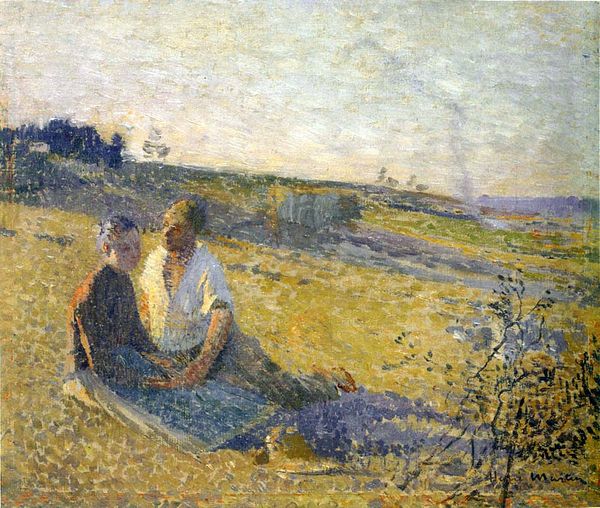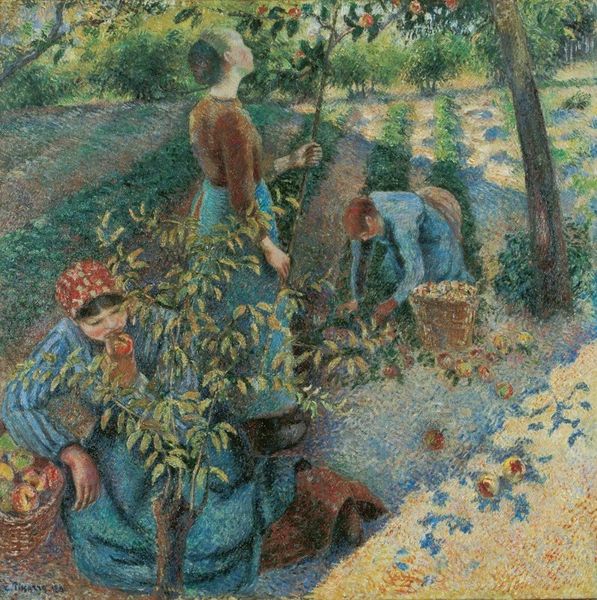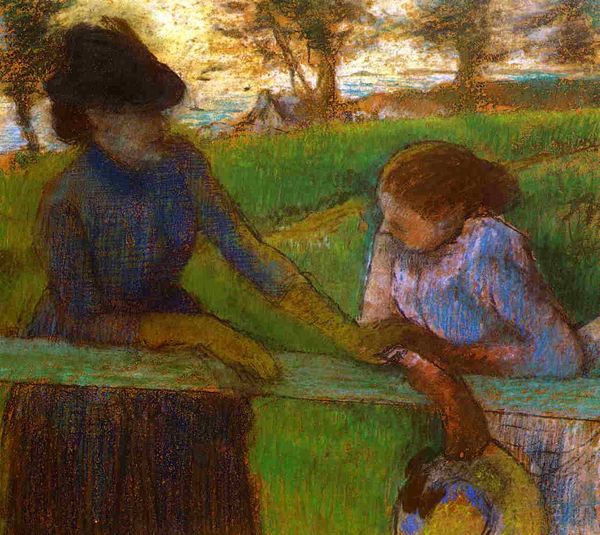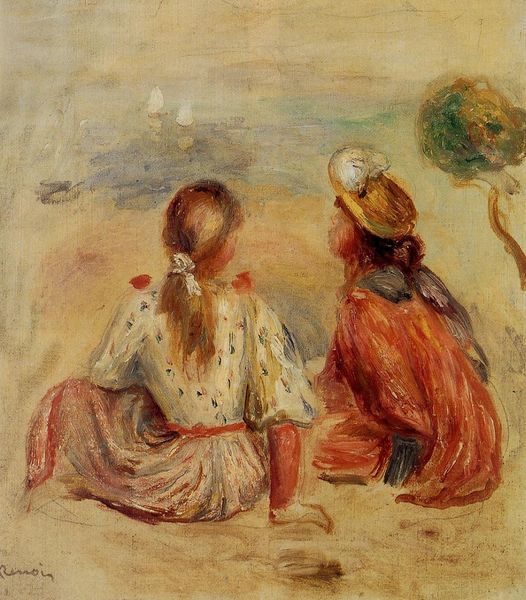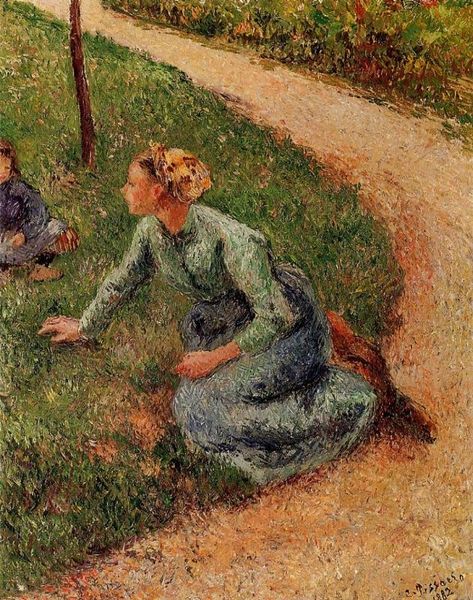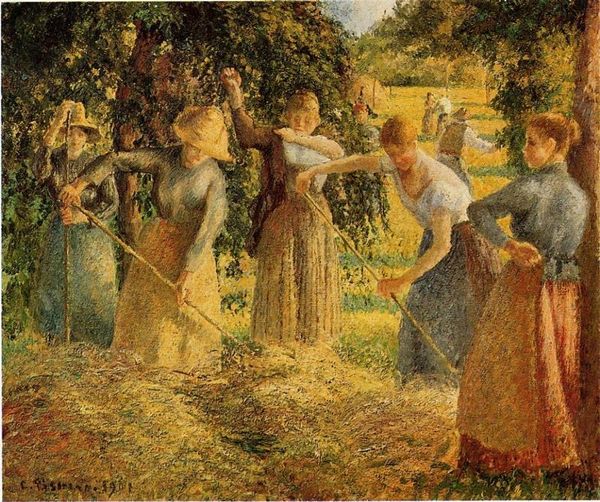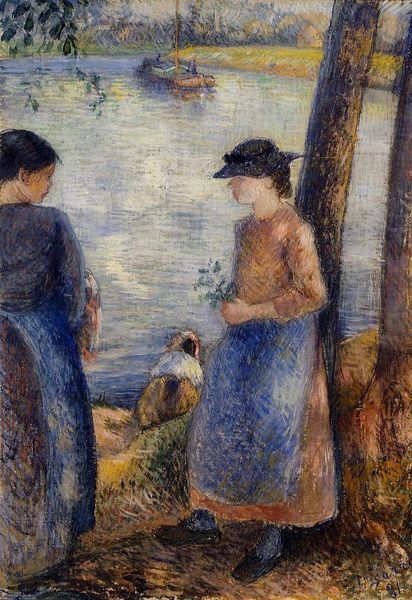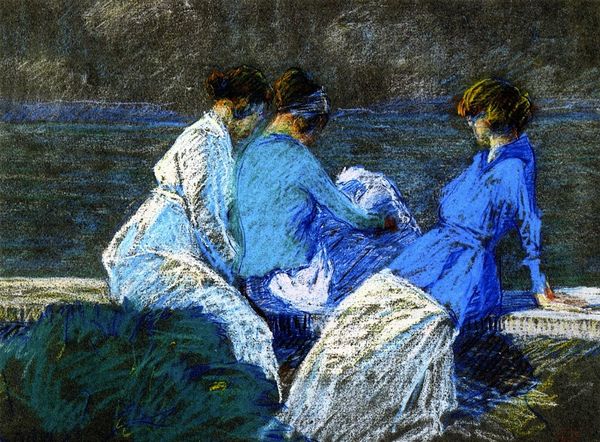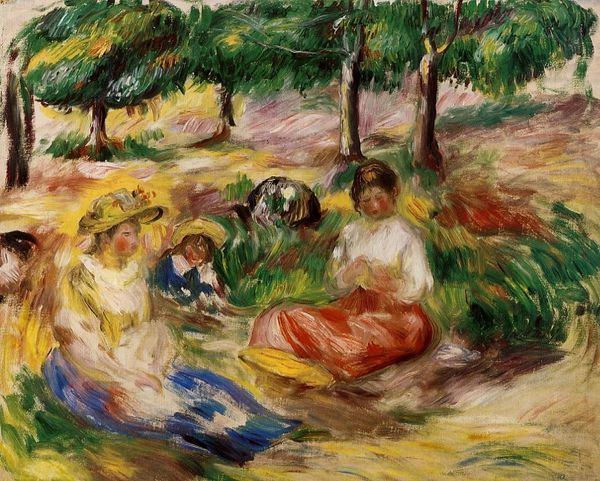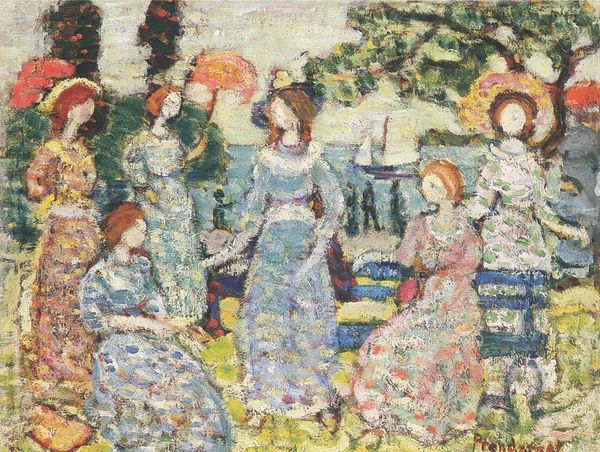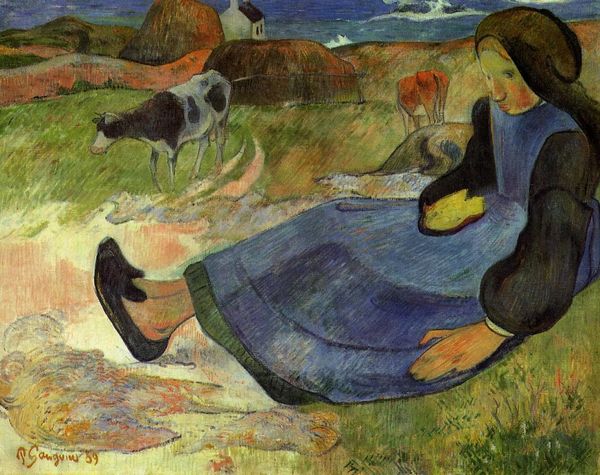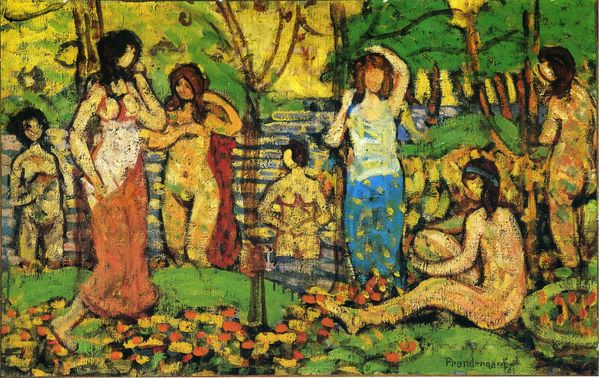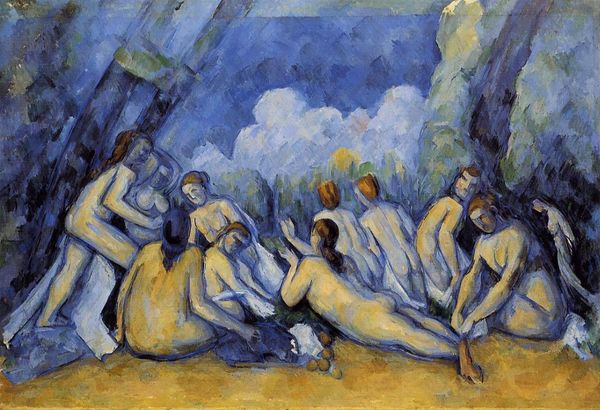
Dimensions: 65.4 x 81.3 cm
Copyright: Public domain
Curator: Painted in 1891 by Camille Pissarro, this oil on canvas work, titled "Haymakers Resting," offers a glimpse into rural life, depicting three women taking a break from their work in the fields. Editor: My first impression is one of quiet exhaustion and sisterhood. The figures, while detailed, seem to blend into the very earth they rest upon. There’s a certain muted color palette, creating a calming and almost dreamlike state. Curator: It’s intriguing to consider Pissarro's social commentary here. In the late 19th century, rural life was undergoing dramatic changes, and works depicting laborers, especially women, held significant weight. They bring attention to a specific gendered division of labor. Do we consider this work through a socialist feminist lens, then, and critique the art market? Editor: I see how this invites us to consider broader societal shifts. And to follow that, if we consider their clothing, there are only minor individualized traits or color selections within them. Beyond practicality, might their clothing express an implied community or collective? Curator: Exactly. The style certainly lends itself to the interpretation, and to a point, their anonymity does raise interesting questions about class, representation, and the male gaze within the Impressionist movement. Pissarro always seemed interested in that struggle to render people as unique, or to blend them into an idea of the times. Editor: Speaking of anonymity, observe the figure in the vibrant red garment. Although her face is obscured from us, the image of a traditional pastoral Madonna comes to mind, but transposed within a secular and quotidian context. The covered head can have a dual meaning of deference and social class at the same time. Curator: And the other two figures’ dresses in paler, earthy blues perhaps indicate a hierarchy or at least a division of labor within the group. It is fascinating to witness this interplay between the symbolism of the garb, the field of labor itself, and their shared place within a cultural history of art. Editor: Thinking of visual heritage, it all coalesces into a potent blend of timeless archetype with localized social awareness, and I'm always struck how art carries echoes of our shared past in these quiet, observant forms. Curator: Precisely. By considering the confluence of class, gender, and social structures in Pissarro’s era, this seemingly serene pastoral scene sparks very profound inquiries regarding those still visible societal divides today.
Comments
No comments
Be the first to comment and join the conversation on the ultimate creative platform.

